The purpose of houseplants (in winter) is to ameliorate the effects of cabin fever. The best houseplants for this purpose grow fast enough that you can see changes from day to day, and they also bloom–strengthening the illusion that actual gardening is taking place. Flowering bulbs are well-suited to the task–the tender ones that tolerate our artificially heated homes and the hardy ones that can be tricked into blooming early.
This winter I grew Madeiran Squill (Scilla madeirensis) for the first time.

I waited over a month to plant them, because I didn’t want them blooming before I needed them. I wanted them to bloom after the holidays, after my Thanksgiving and Christmas cactuses were done. No instructions came with the bulbs, so I planted them with the soil just covering the tips of the bulbs. I’ve since read that you should leave the neck of the bulb exposed, so it doesn’t rot, but as you will see, mine did fine. (You can read more detailed instructions here.)
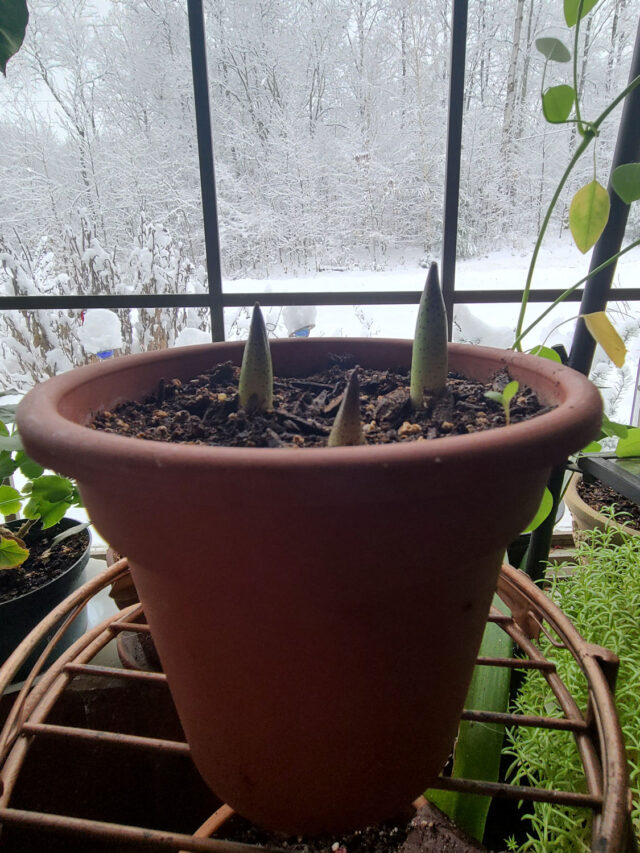
At first it seemed like nothing was happening, and I hoped my bulbs weren’t rotting in the pot, but after three weeks the bulbs had sprouted with attractively spotted foliage.
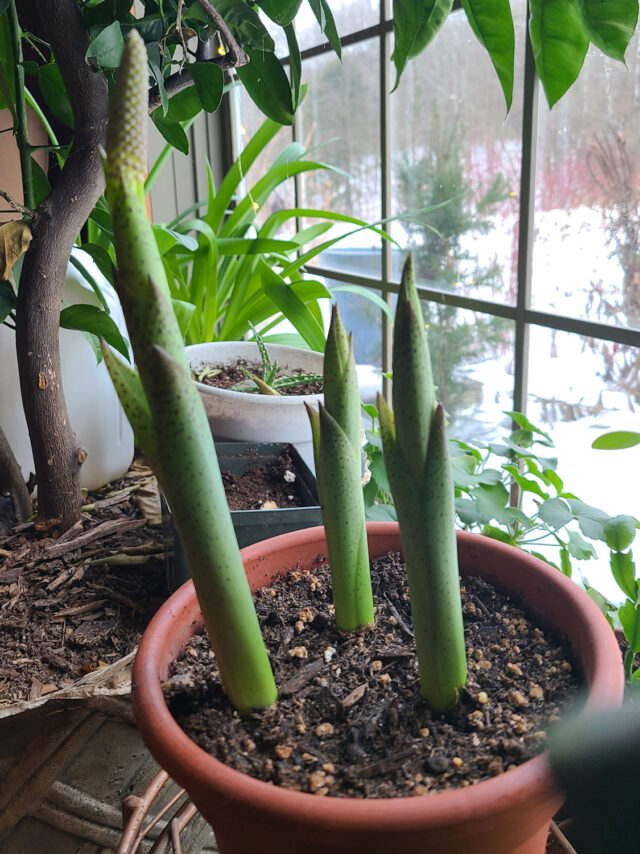
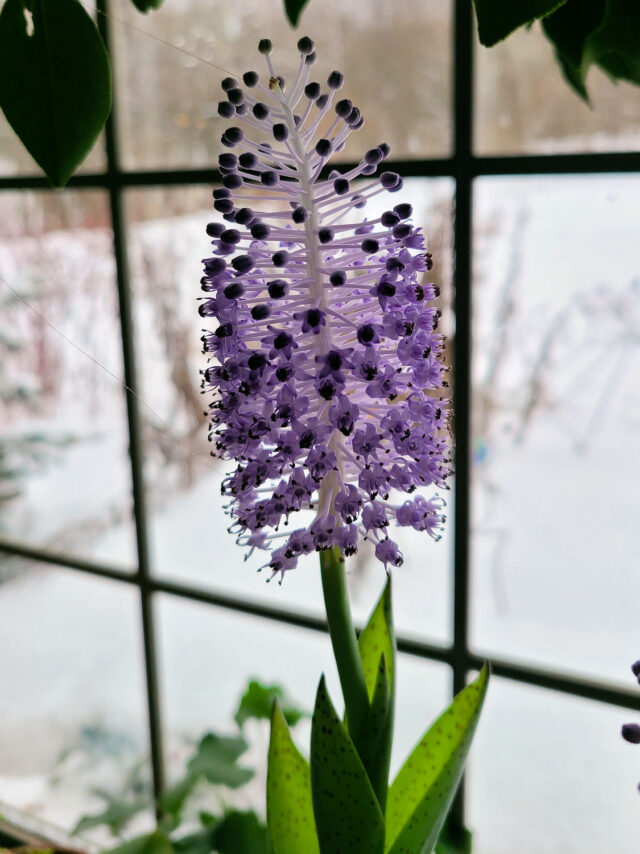
In a little over six weeks, the bulbs went from newly-potted to beginning to bloom, a delightful contrast to the snow and cold outside.
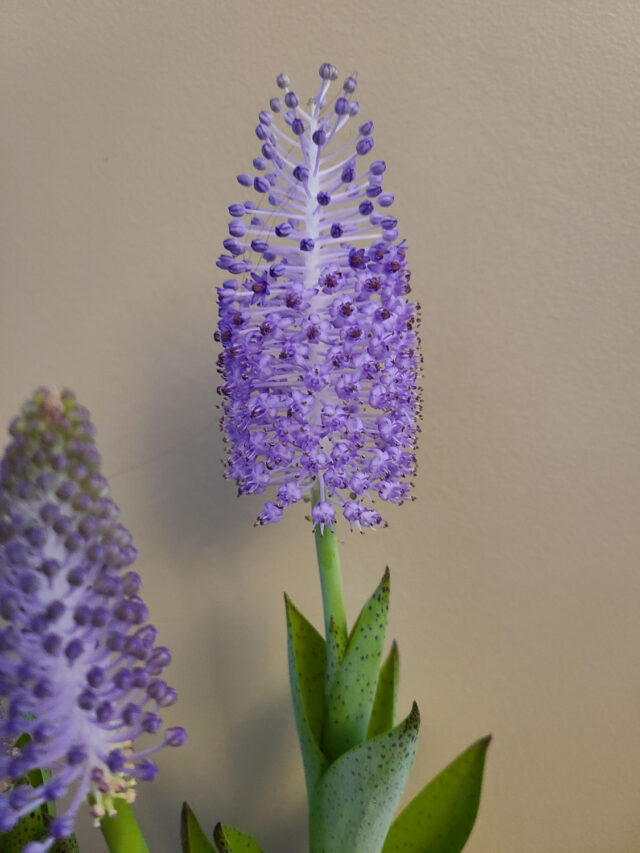
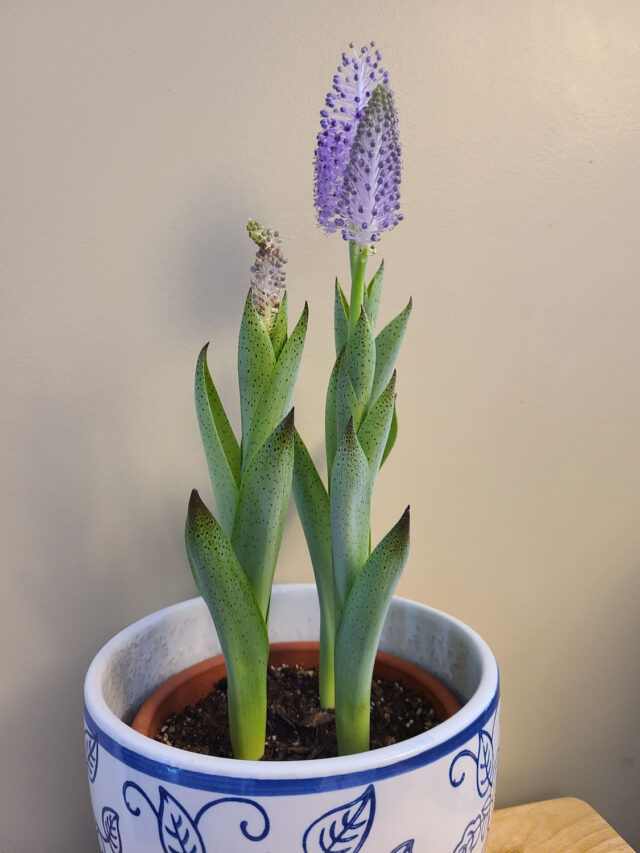
The third flower didn’t really bloom. I’m not sure whether that’s due to my inconsistent watering, or something that happened before I received it. It never amounted to much, and it’s now dry and shriveled. The other two flowers spikes still look attractive, even though they’re past their prime. In another day or two I will cut the flowers off.
Madeiran squill checks all the boxes:
- Easy to get started
- Relatively quick to flower
- Attractive foliage
- Beautiful flowers
What’s not to like? They cost quite a bit more than hyacinths, but less than an amaryllis. However, an amaryllis is quite a bit bigger. I’m not sure if I will be able to grow these well enough that they will flower again next year. They will need as much sun as I can give them (which in the winter is a lot less than they get on Madeira) until they go dormant. And I suspect, like amaryllises, they will be on their own schedule next year and may bloom long before I want them to.
I’ve tried them all and found them lacking
I have yet to find the right spot to give hyacinths their faux-winter chill, so must resort to buying them pre-forced and almost blooming. I tried another variety of paperwhites this winter (‘Nir’), but my family still complained of the smell.
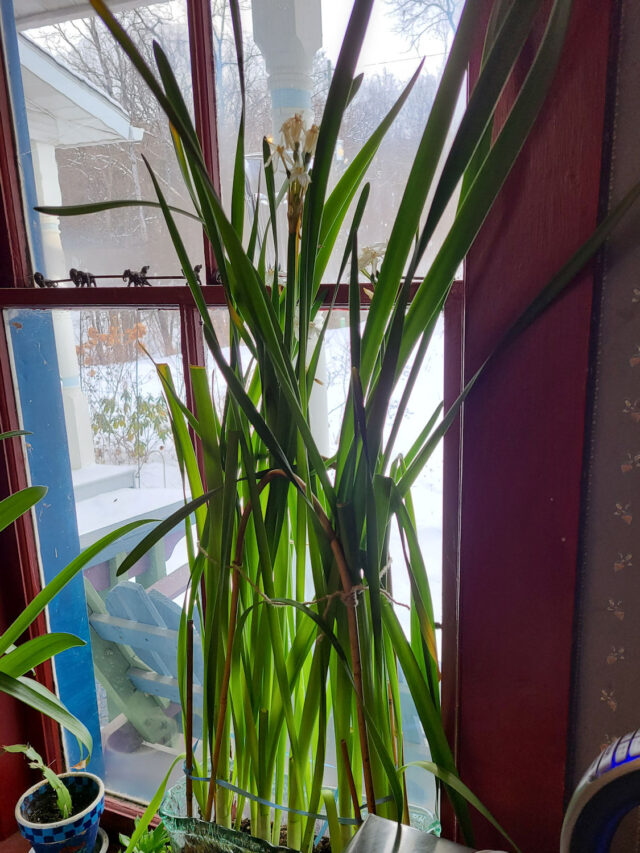
They also get so leggy that they’re no longer attractive, even while still in bloom. If you force them in water with some alcohol added, that stunts them and keeps them shorter. But I haven’t had as much successful bloom that way.
A flower a day keeps cabin fever at bay
So Madeiran squill is my new favorite way to keep cabin fever tolerable. And boy, do I have cabin fever. No wonder: Last year we had a thaw in mid-January and I could see snowdrops emerging. (No, not blooming–but at least out of the ground!) By January 29th of last year, my vernal witch hazel had blooms. On February 23rd the first winter aconite opened, and the next day snowdrops showed white, though they hadn’t opened.
This winter has been more unrelentingly winterish. It rarely gets above freezing, and another inch or two of snow falls several times a week. No reprieve, no little signs of hope. I try to remember that while winter was intermittent last year, it actually lingered a long time.

We had snow in May that didn’t melt on contact. A week later it was summertime hot. I will gladly endure snow in February (where it belongs) if I can have a mild and mellow May. However, I don’t get a choice in the matter, do I?
So I nurture my hardy soul with indoor plants and take it one day at a time. As the Madeiran squill is waning, last year’s amaryllises are sending up flower stalks and the clivia is showing a bit of orange. The foliage plants are responding to increased daylight with new growth. Spring will get here, eventually.





Beautiful Winter Bloomers Plant. I will try to grow in my office. I apricate for sharing.
The squills look absolutely beautiful, and oh the pleasure of watching something grow! This winter, cabin fever led me to put forgotten bits of ginger rhizomes in a pot of compost on the windowsill. They’re growing! They have leaves! I have no idea what to do next, but it’s fun.
Oh, how fun, Christine. There are entire books on growing plants from what you can buy at the grocery store. I should remember that next time I need to see something grow.
I will definitely try this next winter!I’m growing veltheimia for the first time-the 2 colors Brent and Becky’s bulbs offer-and they are real winners.I didn’t expect the foliage to be so attractive,even before the blooms.A happy surprise.The Polar Vortex has hit Iowa hard.We’ll be -21 again tomorrow night.Our highs have been below zero for too many days.I’m glad we have a deep snow cover-I could see about an inch of G.elwesii foliage emerging last month.
Whoa, Kathy, you are really in the worst of it. I agree, snow cover helps an awful lot. The temperature sensor to my modest digital weather station inadvertently got buried in snow. It stays in the high 20s while the air temperature has been in the single digits (F). It has really brought home to me how much the snow cover helps. Veltheimia is something I hope to try next year. Glad to hear you’re enjoying it.
That’s an unusual and delightful squill! I have several Scilla peruviana, (Peruvian squill) in my garden, but one that forces well and isn’t overwhelmingly scented is a find. Thanks for the intro!
That is a beautiful bloom; I’ll have to try it! You’re right: Forcing bulbs is good therapy on late cold winter days. 🙂
Absolutely beautiful post! Thank you!
Glad you enjoyed it!
The Squills were stunning in person. Definitely a delight on a cold winter’s day.